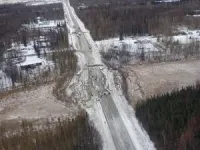(Press-News.org) It’s in your heart and liver, in the vegetables you eat, in the rogue cells that cause cancer. Those who live in temperate regions are surrounded by more of it than people who live in the tropics, and without it, humans wouldn’t exist.
It’s called polyploidy, and only within the last few years have biologists begun to recognize its significance across the tree of life.
“It’s one of the most important biological processes that hardly anybody knows about,” said Doug Soltis, a distinguished professor at the Florida Museum of Natural History.
Soltis is one of 18 scientists who have received a combined $12.5 million grant from the National Science Foundation to establish the Polyploidy Integration and Innovation Institute. The grant is part of a broader initiative by the National Science Foundation to bring together scientists from disparate areas of expertise to work on pressing problems in biology.
“Polyploidy is a perfect topic for this sort of integration,” said Pam Soltis, a distinguished professor and curator at the Florida Museum and lead investigator on the project. Researchers with the institute will study the effects of polyploidy in plants and animals, from entire ecosystems down to organs and cells.
“We want to conduct a set of experiments that is consistent across organisms,” Doug Soltis said. “This is the first time we’ll be able to determine whether there are consistent rules that govern polyploidy.”
The institute will also use new and unique data management tools and prioritize community engagement to gain as much insight as possible, with eventual applications to agriculture, medicine and conservation, Pam Soltis said. Educators on the team, including the Florida Museum’s Brian Abramowitz and Stephanie Killingsworth, will take the knowledge generated by the institute and use it to implement a strategic communication and outreach campaign.
“The institute will guide high school curriculum development and teacher training; provide research experiences for undergraduates, graduate students and post-doctoral researchers; and offer training in science communication, while hosting local and international research conferences,” Pam Soltis said.
Polyploidy takes center stage after a century on the sidelines
At its most basic, polyploidy just means having more than the normal pair of matching chromosomes. Typically, when plants and animals undergo sexual reproduction, two sets of chromosomes — one from each parent — combine to create a new organism.
Humans have been aware of this concept since Austrian monk Gregor Mendel established the foundation of genetic inheritance by conducting experiments with pea plants. But occasionally, this process goes awry, and instead of a pair of chromosomes, offspring are endowed with additional chromosome sets in a process called genome duplication.
This happens frequently in plants, and for several decades, botanists were the only ones that took a significant interest in the subject. The process can be so prevalent that some plants carry around eight or more chromosome pairs packed tightly in their cells. What is the utility of all this extra genetic material? Scientists once thought it didn’t have much use at all. Then they discovered it was one of the most common ways new species are formed.
According to Doug Soltis, they’re still learning this. “My own view is there are hundreds of thousands of cryptic polyploid species that we have never recognized or scientifically named.”
Polyploidy has been implicated in the origin of seeds, flowers and several plant lineages, including nearly every cultivated plant humans grow for food.
For reasons that remain unclear, polyploidy also seems to be stratified on a global scale. There are fewer known polyploid species in the tropics than there are in colder regions, and the incidence of genome duplication appears to be higher at increased elevations.
It may also have serious implications for how well plants are able to cope with rapid climate change.
“Polyploidy is already known to shape the structure of biodiversity across the plant, especially since polyploids are often more successful in stressful environments,” said Robert Guralnick, co-principal investigator on the grant and curator of biodiversity informatics at the Florida Museum.
‘Polyploidy is everywhere’
Biologists later discovered that polyploidy wasn’t just restricted to plants. Animals had it, too. Nearly everything with a backbone can trace its origin to double genome duplication events that took place more than 450 million years ago. Similar duplications have occurred in fish, worms, insects, arachnids and mollusks.
“Polyploidy is everywhere,” Doug Soltis said. “It’s a giant iceberg, and we’re at the very tip.”
Scientists next discovered that polyploidy did much more than increase biodiversity. It’s also an important part of the way many plants and animals function — or malfunction. Polyploidy is present in roughly 37% of cancer types in humans. In other types of cancer, scientists think induced polyploidy may provide a cure.
Polyploidy pops up in various organs as well, where it plays a significant role.
“The cells in half of your heart are polyploid. Investigators are figuring out this gives them a higher metabolism, which is important for pumping blood,” Soltis said.
The medical community began realizing the importance of polyploidy in the early 2000s, but it was largely unaware that other biologists had been intently focused on the topic for many decades. A series of scientific conferences devoted entirely to polyploidy helped bring everyone together.
“It’s a case of not seeing what you don’t look for. We were all siloed, and there was a lot of surprise when people learned about what others were doing,” Doug Soltis said.
Just as genetics became its own field of study that transcended biological boundaries after Mendel laid out the laws of inheritance, polyploidy is poised to become a new specialty, one ripe for discovery and innovation. The Polyploidy Integration and Innovation Institute will help make this happen.
“There’s so much we don’t yet know,” Guralnick said. “What’s exciting and unusual about this effort is bringing together what we can learn from lab experiments about how polyploids perform under different conditions with patterns we see across landscapes. This knowledge is necessary for sustaining biodiversity and critical ecological services of value to society.”
Brad Barbazuk and David Miller of the University of Florida are also investigators on the grant. Other collaborating institutions are Cornell University, Duke University, the University of Kentucky, the University of Minnesota, the University of Mississippi, the University of Pittsburgh, Ghent University and the Max Planck Institute for Plant Breeding Research.
END
New $12.5 million National Science Foundation grant awarded to study phenomenon affecting agriculture, cancer, biodiversity and more
2024-06-03
ELSE PRESS RELEASES FROM THIS DATE:
SwRI-led team to bolster earthquake readiness for U.S. Federal Highway Administration
2024-06-03
SAN ANTONIO — June 3, 2024 — Southwest Research Institute will enhance models to strengthen the earthquake resilience of America’s transportation infrastructure and improve public safety in earthquake-prone areas. As part of a contract with the U.S. Federal Highway Administration (FHWA), an SwRI-led team will update and improve liquefaction models. Liquefaction occurs during an earthquake when intense shaking causes soil to temporarily act more like a fluid, losing its capacity to support roads and structures.
“For highways specifically, sometimes state and ...
Updating the way the Lab computes
2024-06-03
Unraveling the behavior of plasma increasingly requires intensive computing resources. That’s why plasma demands a calculated approach to computation.
As the new head of computational sciences at the U.S. Department of Energy’s (DOE) Princeton Plasma Physics Laboratory (PPPL), Shantenu Jha is excited to be at the helm of the Lab’s computing efforts, fusing computer science expertise with PPPL’s pioneering research into the fourth state of matter.
“I want to continue to grow the excellence that already exists in computing for fusion energy at PPPL, which ...
New study finds popular diabetes and weight-loss drugs associated with reduction in incidence and recurrence of alcohol-use disorder by at least half
2024-06-03
CLEVELAND—A new study by researchers at the Case Western Reserve University School of Medicine reveals that the popular diabetes and weight-loss drugs Wegovy and Ozempic are linked to reduced incidence and recurrence of alcohol abuse or dependence.
The team’s findings, recently published in the journal Nature Communications, may suggest a possible new treatment for excessive alcohol use—including alcohol-use disorder (AUD), a health condition that causes about 178,000 deaths in the United States each year, according to the Centers for Disease Control.
To date, the U.S. Food and Drug Administration (FDA) has approved only three medications to treat AUD.
The active ingredient ...
Protein discovery could help prevent cancer treatment-related heart damage
2024-06-03
Blocking a protein known as CDK7 could prevent heart damage associated with a commonly used cancer chemotherapy medication, according to a study led by scientists at Washington State University. Importantly, the researchers also found that inhibiting CDK7 could help enhance the medication’s cancer-killing capability.
Based on an animal model, the study findings could provide a foundation for future treatment strategies to reduce chemotherapy-related heart toxicity and increase treatment effectiveness. ...
Fewer than 1 in 4 patients receive dietary counseling after a heart attack
2024-06-03
Although diet is the leading contributor to premature death from heart disease in the United States, fewer than one-quarter of people who undergo major heart events receive dietary counseling in the aftermath, a study finds.
The research, led by a team from the University of Michigan Health Frankel Cardiovascular Center, tracked nearly 150,000 patients seen at hospitals across Michigan for serious heart conditions — such as heart attack and heart failure — between late 2015 and early 2020.
Results published in Journal of the Academy of Nutrition ...
Endocrine Society Guideline recommends healthy adults under the age of 75 take the recommended daily allowance of vitamin D
2024-06-03
BOSTON—Healthy adults under the age of 75 are unlikely to benefit from taking more than the daily intake of vitamin D recommended by the Institutes of Medicine (IOM) and do not require testing for vitamin D levels, according to a new Clinical Practice Guideline issued today by the Endocrine Society. For children, pregnant people, adults older than 75 years and adults with high-risk prediabetes, the guideline recommends vitamin D higher than the IOM recommended daily allowance.
Vitamin D use and ...
A dark side to dark chocolate? New study finds very minimal risk for kids from metals in chocolates
2024-06-03
Chocolate lovers may have been alarmed by a 2023 Consumer Reports finding that some dark chocolate brands could contain harmful levels of lead and cadmium.
However, a new study by Tulane University published in Food Research International has found that dark chocolate poses no adverse risk for adults and contains nutritionally beneficial levels of essential minerals.
The study sampled 155 dark and milk chocolates from various global brands sold in the United States and tested for the presence of 16 heavy metals ranging from the toxic (lead and cadmium) to the essential (copper, iron, zinc). The study then modeled the risk of eating one ounce of the chocolates per day which ...
ECOG-ACRIN completes first trial of Black patients with early-stage breast cancer
2024-06-03
Black patients with early-stage breast cancer who were treated with docetaxel chemotherapy every 3 weeks had less drug-induced peripheral neuropathy and significantly fewer dose reductions compared to those who received weekly paclitaxel, according to a trial by the ECOG-ACRIN Cancer Research Group (ECOG-ACRIN). Study EAZ171 is the first National Cancer Institute (NCI)-sponsored trial to focus specifically on enrolling a minority or underserved population to assess drug-induced toxicity (rather than drug efficacy) ...
Understanding the atomic density fluctuations in silica glass
2024-06-03
In materials science, particularly in the study of glasses, the intermediate range order (IRO) is one of the most intriguing research areas owing to its significant influence over the physical properties of glasses. The IRO refers to the structural arrangement of atoms beyond the short-range order (atomic arrangement within a few atomic distances) but shorter than the long-range order (arrangement patterns over macroscopic distances). Notably, for covalent glasses, the IRO is marked by atomic density fluctuations.
Scattering experiments provide a distinct signature of ...
Crucial shift in River Nile’s evolution during ancient Egypt discovered
2024-06-03
Crucial shift in River Nile’s evolution during ancient Egypt discovered
Researchers have explored how the River Nile evolved over the past 11,500 years and how changes in its geography could have helped shape the fortunes of ancient Egyptian civilisation.
Research published in Nature Geoscience reveals a major shift in the Nile around four thousand years ago, after which the floodplain in the Nile Valley around Luxor greatly expanded.
The findings raise the possibility that this shift could have contributed to the success of the ancient Egyptian agricultural economy at points between the Old and New Kingdom periods. ...






